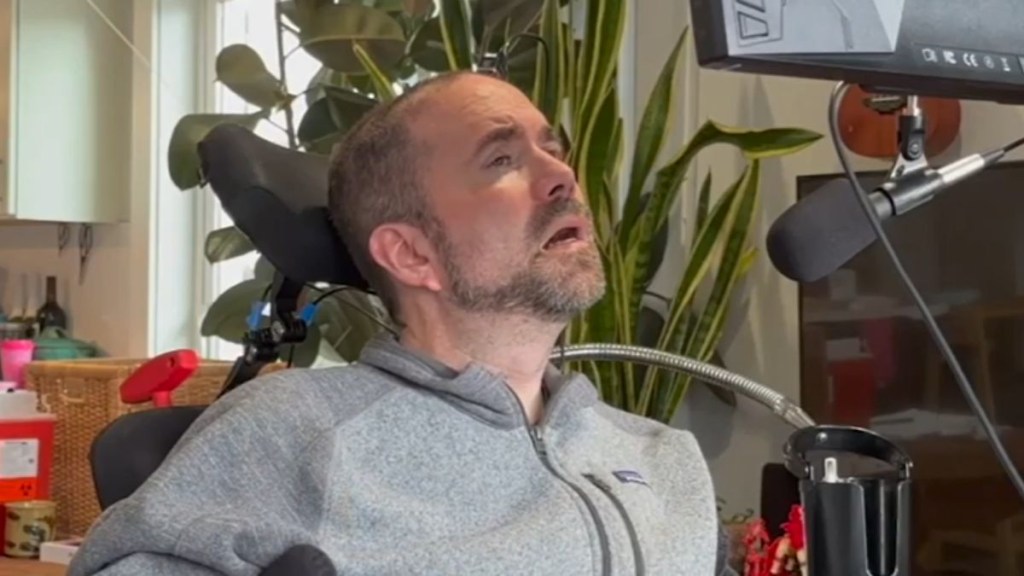Stephen Hawking, one of the world’s most brilliant scientists, lived with ALS (Amyotrophic Lateral Sclerosis) for more than 50 years. This neurodegenerative disease slowly takes away control over the muscles, including the ability to speak. Although Hawking couldn’t talk on his own, he used a computer system to share his ideas and continue his work. But what if there was a way for people with ALS or paralysis to talk again in real-time and in their own voice?
A new technology developed by researchers at the University of California, Davis, is now making that possible. Scientists have created a brain-computer interface (BCI) that can turn brain signals into spoken words, even when a person can no longer speak out loud.
This system is giving hope to people with speech loss, and it’s exactly the kind of breakthrough someone like Stephen Hawking would have dreamed of.
How does the technology work?
The new system works by placing tiny electrodes called microelectrode arrays in the part of the brain that controls speech. These electrodes pick up signals from the brain when a person tries to speak. Even if no sound comes out, the brain is still working and sending signals.
The signals are sent to a special AI program that translates them into spoken words in just 10 milliseconds. That’s fast enough to allow normal, back-and-forth conversations, which is something that older systems couldn’t do.
One of the most impressive features is that the AI can recreate the person’s own voice, using recordings made before they lost their ability to speak. So instead of a robotic voice, the person hears something that actually sounds like them.
“Our voice is a huge part of who we are,” said Dr. David Brandman, one of the researchers. “This technology helps give that back to people who’ve lost it,” he further said.
More than just words
This new system doesn’t just speak. It can also understand tone and emotion. For example, it can tell when the person is asking a question, making a comment, or even trying to sing. It can also handle simple expressions like “aah,” “hmm,” or “oh.”
This means conversations feel more real and human, unlike older systems that were slow and robotic.
In the study, one participant with severe speech loss used the system to try speaking sentences shown on a screen. As he attempted to speak, the electrodes picked up brain activity, and the AI turned it into speech.
Listeners could understand about 60 per cent of what was said using the new system as compared to just 4 per cent without it. Even better, the system worked with new words it hadn’t been trained on, showing how smart and adaptable it is.
Why this new technology is important?
For people living with ALS, stroke, or paralysis, losing the ability to speak is life-changing. Communication often turns into typing slowly on a screen or using eye movements to select words, which can feel frustrating and isolating.
This new BCI system brings real conversation back into their lives.
“Every brain scan we study is connected to a real person with big questions and a deep need to be heard,” said Leland Barnard, the lead data scientist on the team. “This isn’t just about science—it’s about helping people connect again.”
The researchers believe this technology could help people feel more included in social situations, speak with emotion, and express themselves fully, something that Stephen Hawking struggled with using older tools.
Limitations of this new technology
Right now, the system has only been tested on one person, so more research is needed. The team at UC Davis is continuing trials through the BrainGate2 clinical study, and they are looking for more participants with different conditions, including stroke survivors.
Their goal is to improve the system, make it available to more people, and one day turn it into a product that can be used at home and not just in hospitals.
They also want to make the system smaller and more affordable, so it’s not just a tool for scientists or researchers but something that could help thousands of people around the world.
The technology Stephen Hawking could have used
Stephen Hawking once said, “However difficult life may seem, there is always something you can do and succeed at.”
He lived that belief every day, using technology to share ideas, give lectures, and inspire millions. But his speech system was slow, and it didn’t sound like him.
This new brain tech could have allowed him to speak faster, more clearly, and in his own voice. And now, it may help others do what he did—find their voice, even when their body can no longer speak.








